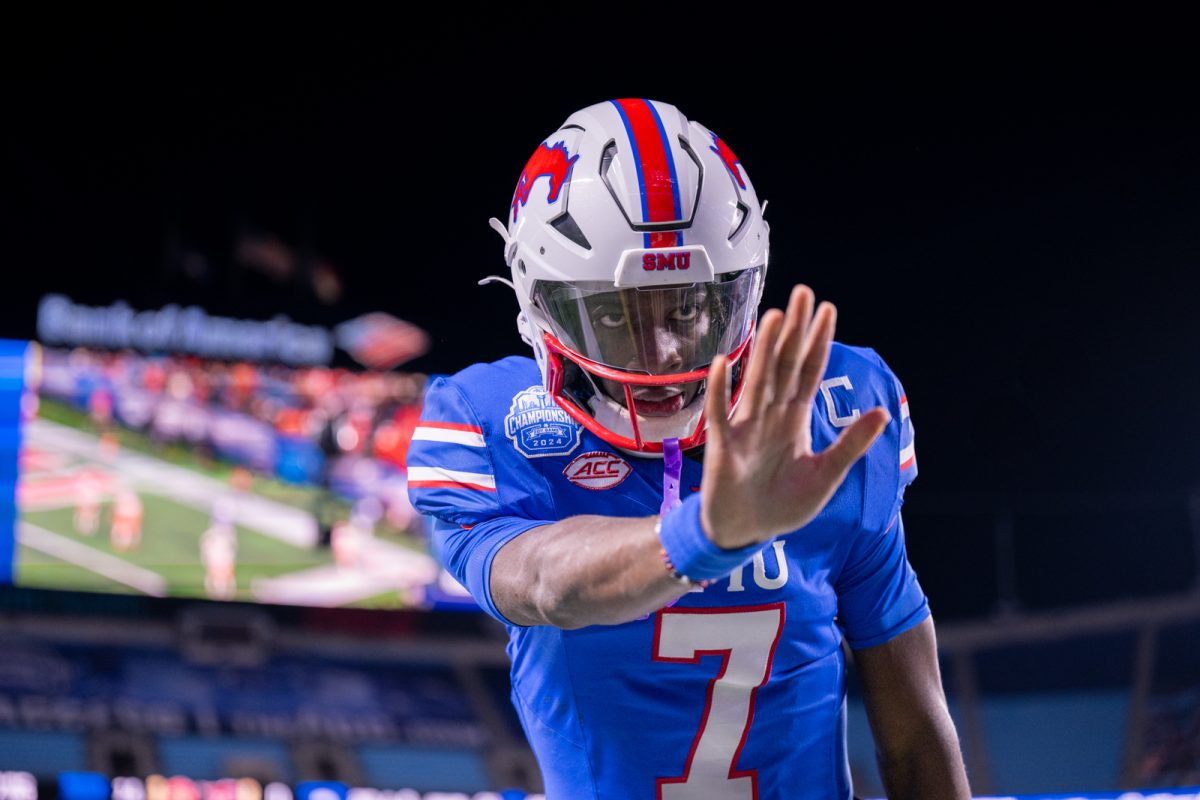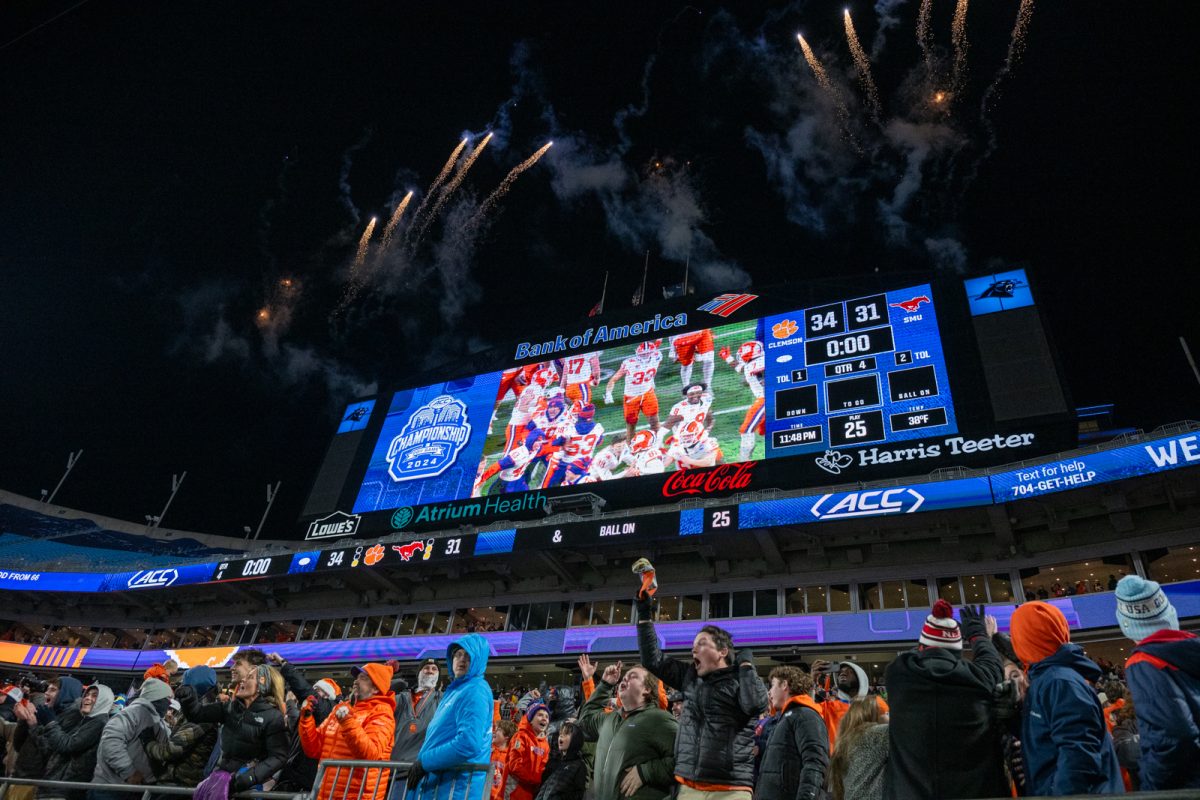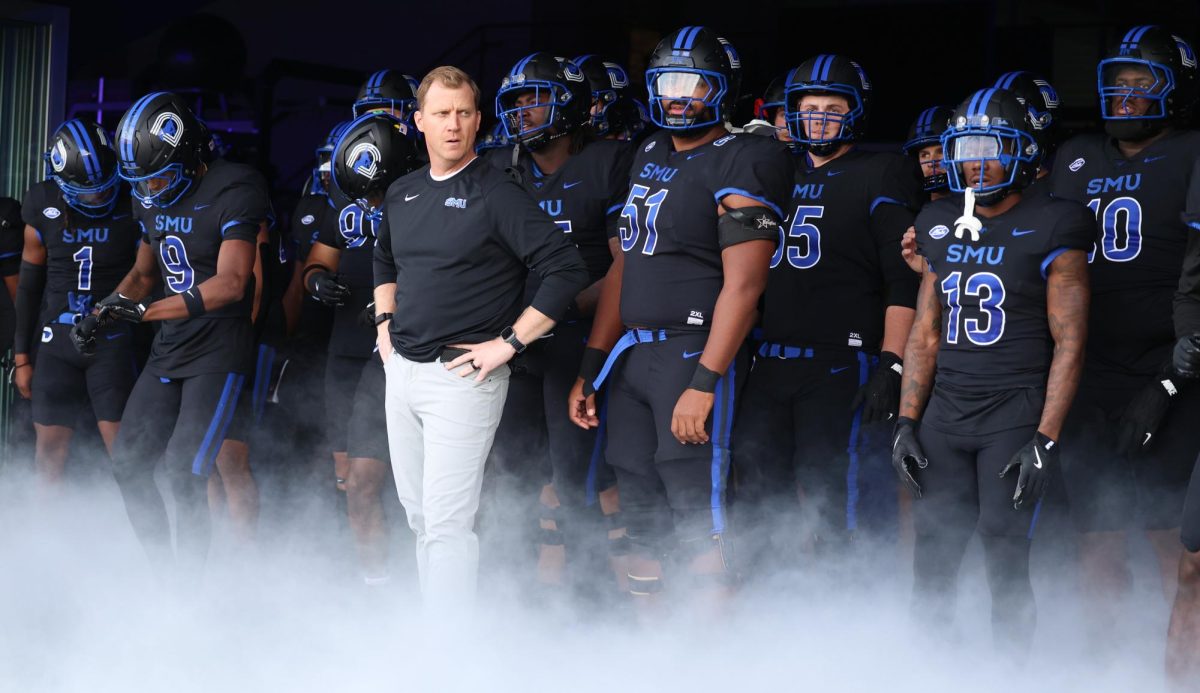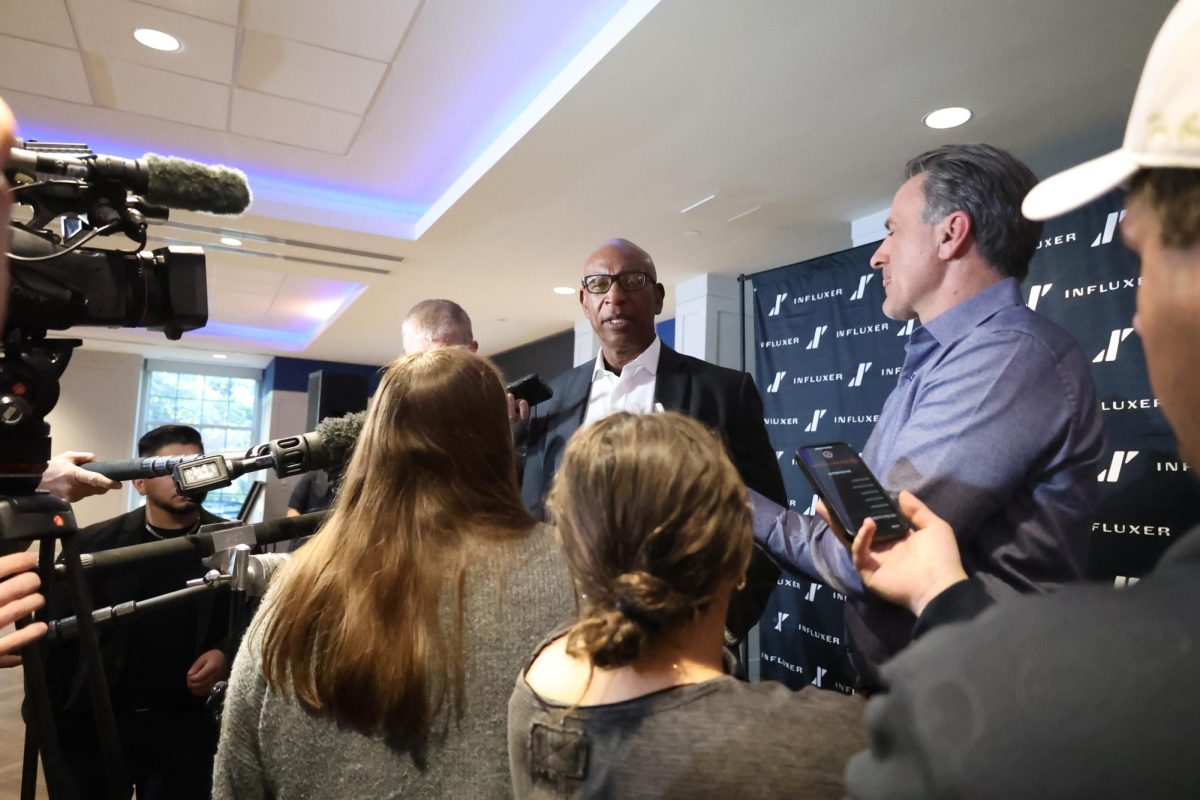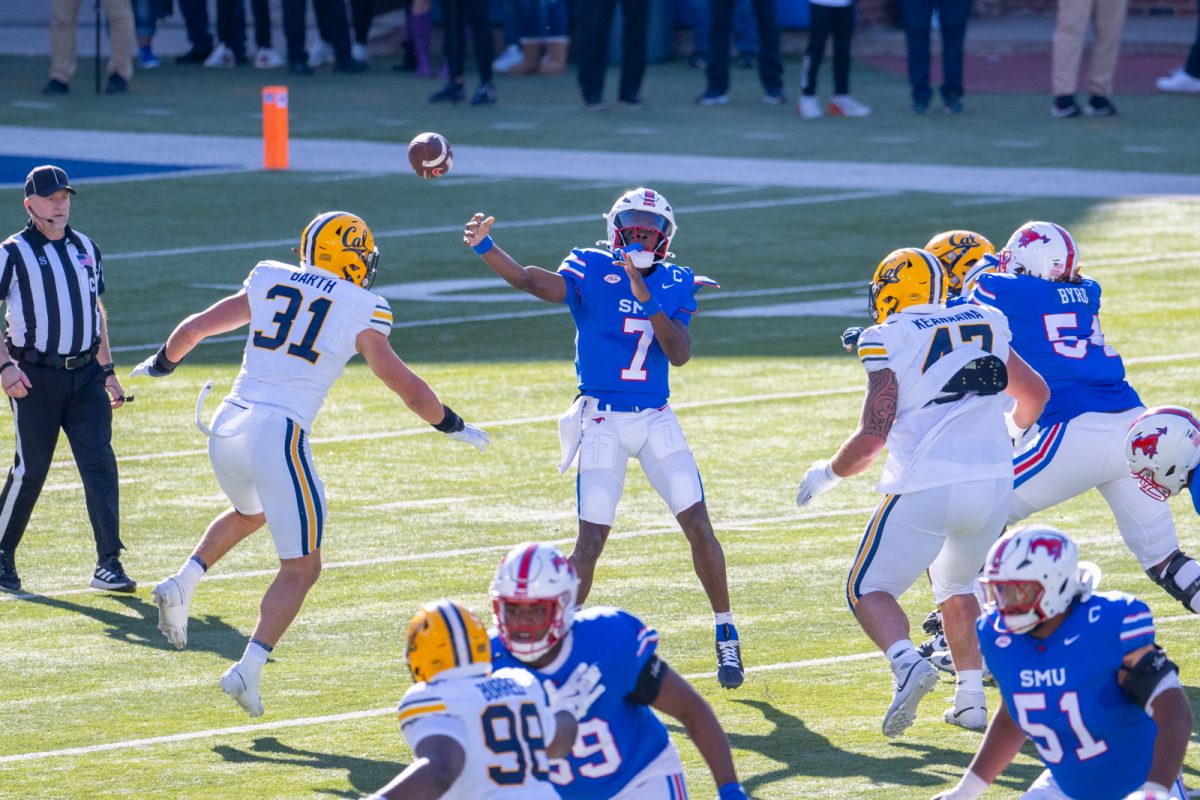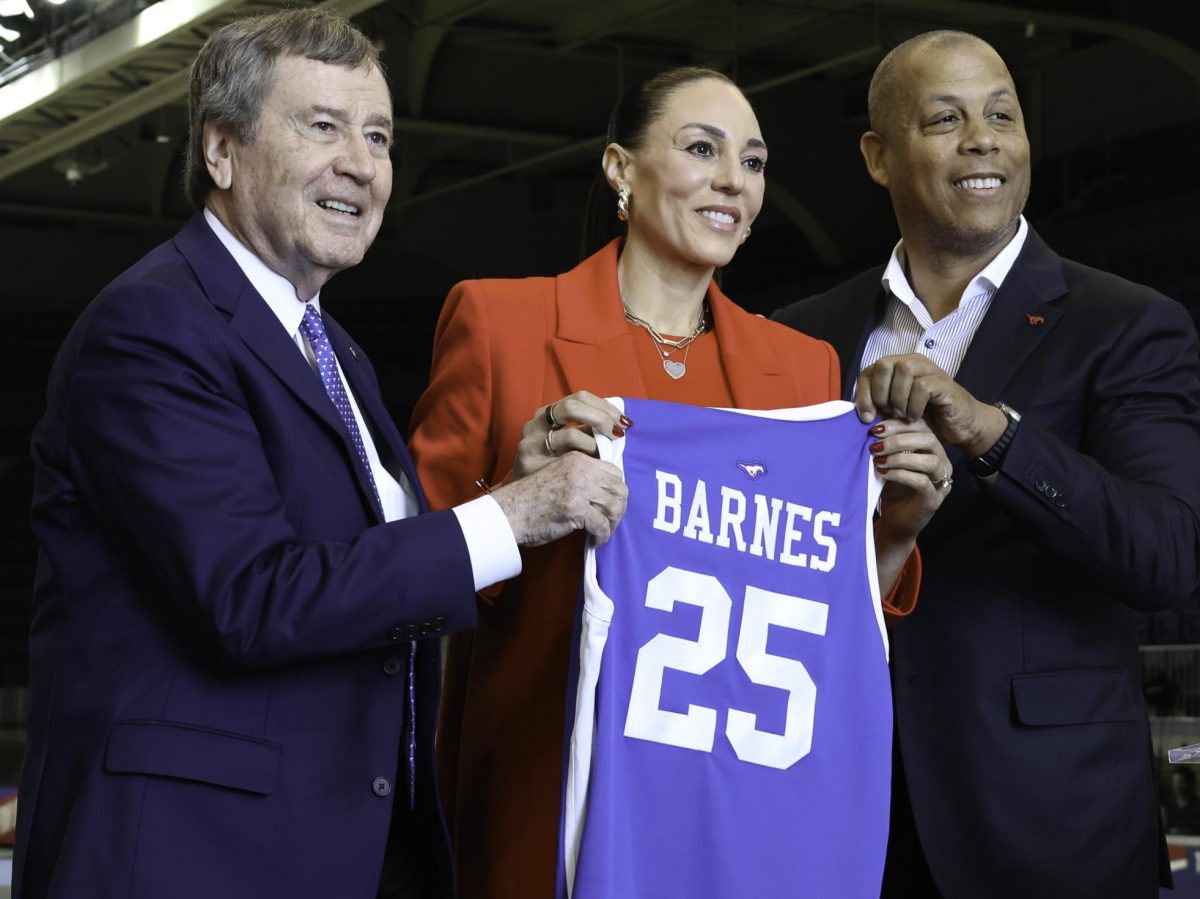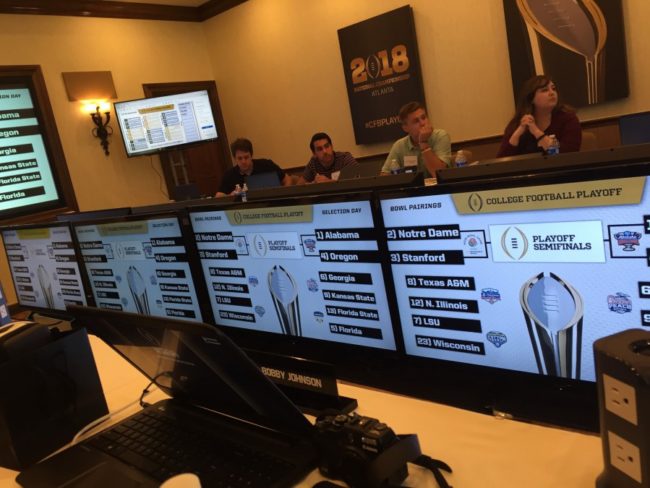
Ever wonder what it’s like inside the room where the College Football Playoff committee ranks the top 25 teams in college football?
I did too, until I participated in a mock selection hosted by the College Football Playoff on Tuesday. At the event, I and other student journalists congregated at the Gaylord Texan hotel, in the exact room where the CFP committee selects its Top 25 every year.
The room is packed with all the information that a college football expert might need. Each committee member is given a binder with information on every bowl-eligible team. Ranging from a team’s schedule, to just about every team statistic you can think of, the binder is loaded with information. Television screens are also all over the room, showing information relevant to the discussion at hand.
Thirteen hats, each with the name of a different committee member inscribed on it, sit on a hat rack outside the room. The hats outside the room signify that the members are leaving their biases at the door, as many of the members have worked for a university in the past.
For the exercise, I and twelve others were tasked with picking the top 25 teams from the 2012 college football season, in the same manner that the actual committee ranks its teams. For the ranking exercise, it is important to remember that the goal is to rank the 25 best teams in order, not to create the most exciting playoff matchups.
The process began by the 13 members submitting their own top 30 teams, unranked, into a laptop at their desk. After that, the 37 teams that received three or more votes were entered into a pool of teams eligible to be ranked. Members were offered the chance to add a team that missed the cut into the pool, but no one did.
Bill Hancock, the CFP’s Executive Director, explained that comparing teams in small blocks is more effective than ranking the 25 teams at once. So after the pool of potential teams was selected, committee members voted for their top six teams and discussed the top six vote-getting teams for the top three spots. After a long session of debate, another vote was held. The votes were gathered and the top three teams were put on the board.
The next step was deciding spots four, five and six in the rankings. The three teams left over from the first vote were included in this group and another vote on the remaining teams yielded three more teams. The committee deliberated over these six teams, and eventually the next three spots were voted in. The process continued in this manner until all of the top 25 spots were filled.
Along the way, any member of the committee can request a revote if he or she feels that a team is not correctly ranked. If a member feels this way, he or she can make the case for a team to be moved, and if three other members agree that a revote should happen, it does.
An important part of the process is recusals. If a member of the committee is getting paid by a program or has family member that is getting paid by a program, that member must leave the room while that program is getting discussed. Members were recused while Clemson, Stanford and Georgia were being discussed, among many other schools.
During the selection process it became clear that different members adhered or subscribed to schools of thought. Some members put a lot of value on conference championships, while other members thought advanced statistics were a better indicator of the quality of a team.
This difference in opinion came to the forefront of the conversation when the committee discussed whether Oregon or Stanford should be ranked higher. In 2012, Oregon had an explosive offense and won every game of its season except for one, a loss to Stanford. Meanwhile, Stanford loss twice, to Notre Dame, which was undefeated at the time of bowl placement, and Washington. Personally, I thought that Oregon proved throughout the season that it was a better team than Stanford, and that its one loss was a blip on the radar. The other side of the argument was that Stanford won the PAC-12 and had the head-to-head advantage over Oregon. The mock committee ended up voting Stanford third and Oregon fourth.
There was also an argument over where to place Wisconsin. In 2012, Wisconsin had an 8-5 record going into bowl placement, but each of its five losses were by seven points or fewer, and most of them came against quality opponents. Wisconsin also made the B1G Championship Game despite its poor record, due to Ohio State and Penn State’s postseason ineligibity for that season. In that game, the Badgers destroyed Nebraska 70-31. One member of the committee thought that Wisconsin was an elite team, and that its high loss count was due to bad luck in close games. He used advanced statistics such as relative rushing offense and yards per play to support his argument. The rest of the committee was not able to overcome the five losses, and concluded that Wisconsin had a problem closing out games since it lost so many tight contests. When the dust settled, the mock committee ranked Wisconsin #23.
Arguments like this came up throughout the selection process, and there was not a dull moment within the six hours we spent finalizing the order of teams.
Bill Hancock, the director of the College Football Playoff and Michael Kelly, CEO of the CFP were both present at the mock selection, and were completely open to answering any question that I or anyone else had throughout the process. Among the questions they answered is the one on everyone’s mind: why are there only four teams in the College Football Playoff?
Hancock explained that the four-team playoff gives extra meaning to the regular season. With only four spots, one or two losses can doom a team’s chances of winning it all. With so little margin for error and with so much on the line, every week in college football is like its own playoff game. Contrast that to the NFL or college basketball, where teams can still secure a postseason birth when losing a larger percentage of their games.
Overall, the mock selection was great way to see the inner workings of the College Football Playoff. I now know the exact manner that these people debate and decide which teams are in the top 25 and who makes which Bowl game.



